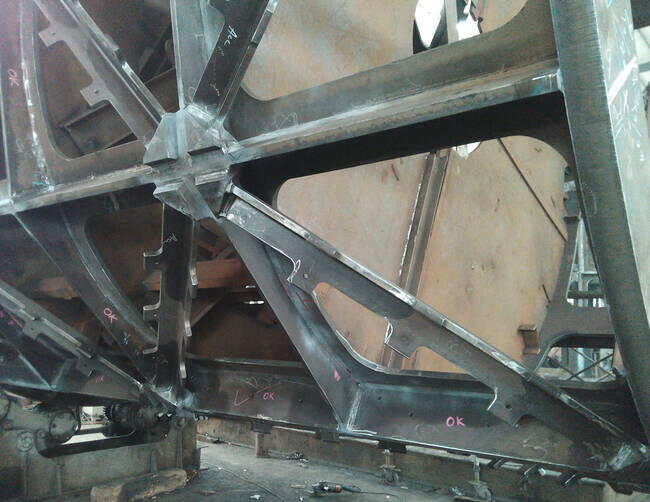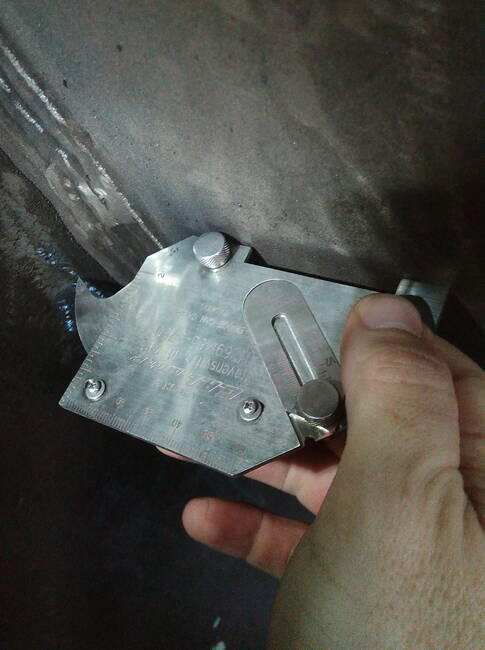Welding Inspection Perth
Welding Inspection is used to test or assure the quality of welds, and secondarily to confirm the presence, location and coverage of welds. Because these welded connections may encounter loads and fatigue during product lifetime, there is a chance they may fail if not created to the proper quality or specification.
Methods of Welding Inspection and Testing are used to assure the quality and correctness of the weld after it is completed. This term generally refers to testing and analysis focused on the quality and strength of the weld, but may also refer to technological actions to check for the presence, position and extent of welds.


Visual Welding Inspection
These are divided into destructive and non-destructive methods. Visual Welding Inspection is classed as non-destructive and mainly includes Visual Scanning and Visual Examination. Visual Scanning is a quick look to check the presence and aesthetics of the weld. Visual Examination is a more in depth look at an area of weld, checking for surface imperfections like :
- Cracks
- Lack of Fusion or Incomplete Penetration
- Undercut
- Shrinkage Grooves - Root Cavity
- Reinforcement
- Excess Penetration
- Linear Misalignment
- Overlap - Overroll
- Toe Shape
- Surface Pores - Porosity
- Weld Size
Please contact us for a chat about how we can help with your Visual Welding Inspection Perth
FAQS
Here are some frequently asked questions about Welding Inspection:
Welding inspection is a crucial process to evaluate the quality of a welded joint and make sure it meets required standards.
Here are the key points to keep in mind:
- Welding inspection is done to verify that the welded joint is properly formed and free of defects.
- It is essential for ensuring the safety and reliability of a structure.
The main aim of welding inspection is to verify that the joint meets the necessary standards and specifications.
Some important things to know:
- Welding inspection helps to ensure that the joint is free of defects that can impact the strength and stability of the structure.
- It verifies that the welding process was performed correctly, including proper preparation, welding technique, and post-weld heat treatment.
- Welding inspection helps to identify any defects or deviations from the required standards, allowing for corrective action to be taken.
The steps in welding inspection usually include:
- Review of design and welding specifications
- Visual inspection of the welded joint
- Radiographic inspection (x-ray or gamma ray)
- Ultrasonic inspection
- Magnetic particle inspection
- Liquid penetrant inspection
Here are some highlights:
- The first step is to review the design and welding specifications to ensure that the joint is being evaluated correctly.
- A visual inspection is performed to look for surface defects, such as cracks or porosity.
- Depending on the type of joint and the specifications, other inspections such as radiographic, ultrasonic, magnetic particle, or liquid penetrant may also be required.
Visual inspection is a simple method to evaluate the quality of a welded joint by examining the surface. Non-destructive testing (NDT) refers to a group of methods used to evaluate the quality of a welded joint without causing damage.
Here's what you need to know:
- Visual inspection is a straightforward method but can only detect surface defects.
- NDT methods such as radiographic, ultrasonic, magnetic particle, and liquid penetrant inspection, allow for the detection of subsurface defects.
- NDT methods are more complex and specialized, and often require trained personnel and specialized equipment.
The most common defects in welding include:
- Porosity
- Incomplete fusion
- Lack of penetration
- Cracks
- Excessive reinforcement
- Distortion
Here are a few things to keep in mind:
- Porosity refers to small holes or voids in the weld, which can weaken the joint.
- Incomplete fusion occurs when the weld metal does not completely fuse to the base metal, creating a weak point.
- Lack of penetration occurs when the weld metal does not reach the root of the joint, leaving the base metal unsupported.
- Cracks can occur in the weld or base metal and weaken the joint or cause failure.
- Excessive reinforcement occurs when the weld metal extends beyond the required dimensions, affecting the appearance and strength.
- Distortion can occur due to the heat of the welding process, causing misalignment or warping of the joint.